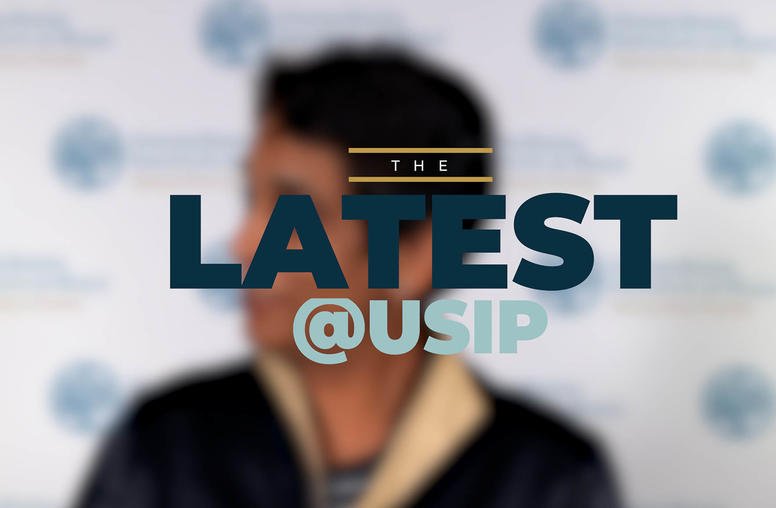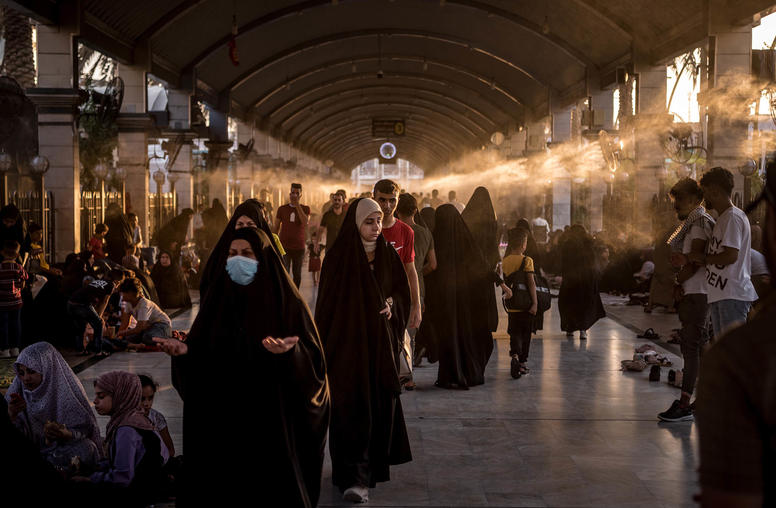U.N. Finally Endorses a COVID Cease-fire: Will it Make a Difference?
Concerted multilateral action under the framework of the resolution may help ease the burden of conflict in some cases.
After months of negotiation and diplomatic wrangling, the U.N. Security Council (UNSC) on July 1 unanimously adopted resolution 2532, endorsing U.N. Secretary-General Guterres’ late March call for a global cease-fire. Diplomats in New York hailed the resolution as an overdue win for multilateralism, while Pope Francis called for the resolution to be implemented “effectively and promptly.” Coming months after the secretary-general’s original cease-fire call and the global spread of the pandemic, will the resolution help bring peace?

The resolution has three main provisions: a demand for a cessation of hostilities, an appeal for an immediate 90-day humanitarian pause, and a plea for intensified international cooperation to tackle the pandemic. Notably, it exempts military operations as they pertain to the fight against the Islamic State and al-Qaida from the cease-fire appeal, a clear carveout for continued counterterrorism efforts in Afghanistan, Iraq, and Syria. It also requests Secretary-General Guterres to provide routine updates to the Security Council on cease-fire implementation progress in conflict-affected and fragile states.
Progress toward the resolution was stymied by months of squabbles between the United States and China over references to the World Health Organization (WHO), including when the United States blocked a similar resolution in May. As such, resolution 2352 has been labeled by some U.N. experts as more of a face-saving measure for the Council than a signal of renewed international resolve. While diplomats parsed language about the WHO, many of the groups that initially signaled an intent to heed the secretary-general’s cease-fire call returned to fighting. In Yemen, the Saudi-led coalition resumed air raids on several Houthi strongholds, killing at least two civilians. In Colombia, the National Liberation Army (ELN) escalated attacks against the national government after an humanitarian accord was in place for just one month. And last week, Russian air raids struck a rebel-held enclave in northwest Syria, the first attacks by Russian planes since a cease-fire was brokered in March. As ACLED, the leading data resource on worldwide violent conflict, summarized in May, the secretary-general’s call largely fell on deaf ears.
Timely Security Council action might have made a difference. During the Ebola crisis in 2014, the United States led a coalition of partners to swiftly secure the passage of a Security Council resolution calling the virus a “threat to international peace and security,” which inspired other nations to drum up their support in a powerful display of solidarity. Conflict parties can be expected to filter international pressure through the prism of their locally specific goals and objectives. In some cases, the initial positive response by conflict actors to the secretary-general’s cease-fire call was meant to curry favor with the international community, as in Colombia. In Libya, violent clashes resumed immediately after combatants expressed initial support for the cease-fire appeal. Had the Council acted with greater resolve at the outset of the crisis when concern about the virus was at its peak, it might have more fundamentally changed the calculations of warring parties and signaled stronger international unity to back up demands with action. As it currently stands, the call to fight “a common enemy” in the form of COVID-19 seems to have little resonance with those still quite intent on fighting their usual enemies.
How it Could Work
Resolution 2532 contains important provisions that could further empower mediators and bolster humanitarian assistance efforts as COVID-19 cases rise in a number of the world’s worst conflict zones:
- First, the resolution gives mediators an urgent, yet achievable, impetus for parties to temporarily pause offensive operations. Humanitarian cease-fires are notoriously difficult to mobilize and often fail to translate into durable peace settlements, but the resolution gives the clear backing of the Security Council to an achievable, urgent and time-limited goal, whereas other Security Council resolutions and mandates are more aspirational in tone and content. Even unilateral cease-fire declarations can be leveraged by mediators to strengthen violence-reduction mechanisms and build confidence on the road to more durable political settlements. At the same time, the resolution can be utilized by mediators to build synergies with regional and local initiatives. The call for a global cease-fire resonates well with the African Union’s call to “Silence the Guns” in 2020 and could give added lift to the AU’s push to mediate numerous conflicts. Similarly, the resolution should provide an impetus for international mediators to deepen their linkages and coordination with local peacemakers to bolster their efforts to bring about and expand cease-fires at the local level.
- Second, it creates a monitoring framework for documenting the worst abusers of the resolution. In requesting Secretary-General Guterres to provide routine updates to the UNSC on the progress of cease-fire implementation, the Security Council subjects belligerents to international scrutiny, which—given the right political pressures—may deter both state and non-state actors from resuming violence. At the same time, the monitoring framework may also incentivize otherwise skeptical parties to honor or renew their cease-fire commitments, especially if international scrutiny begets rewards for good behavior. At a minimum, conflict parties will be cognizant about the extent to which they flout the Security Council on this issue when seeking to curry support for U.N.-led processes in other fora.
- Third, the resolution could help provide new openings for critically needed humanitarian assistance to address worsening conditions in many of the world’s worst conflicts. As COVID cases rise in some conflict zones, including Yemen and Syria, and as other humanitarian conditions—such as malnutrition—worsen, the calculations of conflict actors will continue to evolve. If the resolution helps open some space for humanitarian agencies to reach new populations with timely assistance, it will have been a worthwhile effort.
As with all Security Council resolutions, the success or failure of resolution 2532 will depend on the extent to which member states use their diplomatic capital to make it a reality. Data and analysis on the interplay of the pandemic and peace is now much more robust—including a recent initiative by the University of Edinburgh, USIP and other major peacebuilding organizations, to track COVID-related cease-fires and inform the efforts of policymakers and peacebuilders. While the task will not be easy—sustainable cease-fires demand political buy-in and significant coordination between international, regional, and local mediators, and still often fall short—the potential payoff to bring about even a temporary peace is worth the effort. While the Security Council’s delays were unfortunate, in this case, late is better than never. Implementing the resolution now—and using it to advance improved access amid escalating humanitarian crises—remains a pragmatic step that merits the international community’s full support.




